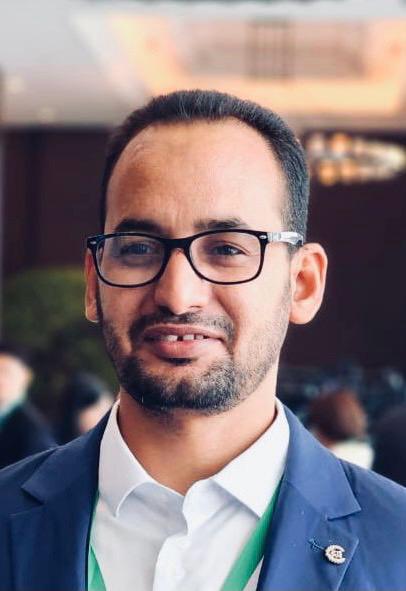في عالم اليوم تظهر قنوات جديدة باستمرار، وتتغير الأذواق لدى الجمهور بسرعة فائقة، وتشتد المنافسة بين الشبكات ووسائل الإعلام، ومع تعاظم نطاق التغطية وتزايد الضغط على غرف الأخبار، بات من الضروري تطبيق التفكير التصميمي (Design Thinking) في الممارسة الصحفية اليومية ضمن مكاتب التحرير.
نحن نبحث في كيفية العمل بطريقة أكثر ذكاءً لزيادة جودة الأخبار والتقارير المقدمة إلى الجمهور. توخيا للفوائد المحتملة، واقتناص فرص تقديم منتجات إعلامية تلبي احتياجات الجمهور وتجذبه، وذلك من خلال تطبيق التفكير التصميمي في الممارسة الصحفية اليومية في مكاتب التحرير.
وعلى الرغم من أن الفكرة قد تبدو صعبة أو غريبة بعض الشيء، إلا أن التفكير التصميمي يمّهد الطريق أمام المؤسسات الإعلامية لمواكبة التغيير القائم وتكييف المحتوى مع متطلبات الجمهور.
أدركت بعض وسائل الإعلام أنها إذا لم تنجح في أن تُشرك الجمهور في صناعة المحتوى، فإنها مهددة بأن تفقد الاتصال به. لذلك بدأت تبحث عن استراتيجية مبتكرة موجهة نحوه، تجعله شريكا في إنشاء المحتوى، والاستفادة من أفكاره في تصميم منتجات إعلامية، ومواجهة تحديات الوصول إلى المصادر الموثوقة داخل غرف الأخبار، وتقديم تقارير معمّقة تهم الجمهور بالفعل، والاستفادة من أفكار الأخير في إنجاز تغطيات إخبارية احترافية.
حتى أن بعض وسائل الإعلام في السويد مثلاً، قامت بإنشاء مجموعة مرجعية متنوعة من فئات الجمهور المستهلك للمواد الإعلامية، للوقوف على احتياجاتهم واعتمدت نهجًا أكثر إنسانية مع مشاركة الجمهور في جميع مراحل تطوير المنتج الإعلامي، والسماح له بالتعليق ومناقشة المنتج الإعلامي في مرحلة مبكرة جداً، ما يمنح المؤسسات الإعلامية العديد من الميزات الإضافية وتحقيق نسب وصول وتصفح أكبر، وهذا ينعكس على النشر والتفاعل، ويساعد على بناء علامة تجارية أقوى.
يعدّ التفكير التصميمي أيضًا تحولاً في نظرية إدارة الأخبار، بدلاً من العمل من أعلى إلى أسفل لحل المشكلات المتعلقة بالمعلومات الكمية، يتم الترويج لمنظور تصاعدي من الأسفل إلى الأعلى مع المعلومات النوعية.
لكن كيف نستخدم التفكير التصميمي في الممارسة الصحفية اليومية في مكاتب التحرير والشركات الإعلامية المختلفة؟
ماهية التفكير التصميمي
وفقًا لمؤيدي منهج التفكير التصميمي، فإنه يعدّ نهجاً إبداعياً وطريقة لحل المشكلات المعقدة، حيث توفر مهاراته للمؤسسات الإعلامية والصحفيين منظورًا استراتيجيًا..
نستخدم مصطلح "التفكير التصميمي" عندما نشير إلى عملية إبداعية للانتقال من "أ" إلى "ب "، ليس بشكل عشوائي، ولكن بشكل منهجي بهدف سؤال واختبار أنفسنا، وصولاً للإجابة على هذا السؤال. العامل المشترك بين جميع المنهجيات هو وضع المتلقي (المستخدم، الجمهور، العميل، المستخدم النهائي) الذي يكون غالباً في صلب عملية التصميم. جرت العادة، ألا يكون الجمهور مدعوا للمساهمة من قبل وسائل الإعلام إلا من خلال فعلٍ قد يعد سلبياً أحيانا حيث يُسمح له بالتعليق والمناقشة على المواد التي تم إنتاجها بالفعل. وأكبر مثال على ذلك هو كيفية كتابة العناوين أو تقييم التفاعل على وسائل التواصل الاجتماعي.
تنطلق عملية التصميم عندما يفكّر الصحفي بوصفه مصمماً لزيادة القدرة على الابتكار وحل المشكلات المعقدة، وهذا يتطلب تعاونًا مكثفًا بين فريق داخلي متنوع - من التسويق والتحرير وإنتاج المحتوى إلى الموارد البشرية- وينقسم إلى مجموعتين: الأولى استكشاف مساحة المشكلة والأخرى ترسيم الحلول.
يبدأ المصممون من منظور المستخدم ويختبرون حلولًا جديدة تمامًا بمساعدة الأساليب والأدوات العملية للتصور مثل الرسومات والنماذج الأولية التي تساعد في هيكلة المنتجات الإعلامية، ما يعني أن تضع الجمهور نصب عملية إعداد الخطط وأن تقوم بتطوير المحتوى بما يخدم احتياجات المتلقي بعد دراستها بشكل جيد.
جوهر التفكير التصميمي.. الخطوات
تلخص مؤسسة Interaction Design Foundation المراحل الخمس لعملية التفكير التصميمي (أو إطار العمل) بناءً على وصف مدرسة ستانفورد دي للعملية:
المرحلة الأولى هي التعاطف: البحث عن احتياجات المستخدمين.
المرحلة الثانية: تحديد احتياجات المستخدمين ومشاكلهم.
المرحلة الثالثة: تحدي الافتراضات وخلق الأفكار.
المرحلة الرابعة: بناء النموذج الأولي للبدء بإنشاء الحلول.
المرحلة الخامسة: اختبار الحلول.
في التفاصيل..
تركز المرحلة الأولى على الإنسان، ما يعني تطوير التفاعل مع العملاء والجمهور، يتم ذلك بعد التأكد من أن لديك فهمًا واضحًا لرغباتهم واحتياجاتهم والوظائف التي يتعين القيام بها وسياق استخدام منتجك أو المحتوى الخاص بك، وهذا الفهم يتحقق من خلال الملاحظة أو المقابلة أو غيرها من أشكال البحث، حيث يمكن أن تغيّر هذه الأفكار بشكل جذري فهمك للمشكلة.
تتضمن المرحلة التالية وهي التحديد: جمع المدخلات من مرحلة التقييم لتحديد ما عليك القيام به للمستقبل. تؤطر هذه المرحلة المشروع من خلال تحديد ما تحتاج إلى القيام به بالمحتوى بعد أن تكتشف المشاكل مع فريقك.
في مرحلة التصميم، يتم التركيز على أهداف المحتوى في المرحلة المستقبلية. هنا سيكون سهلاً عليك وعلى وفريقك صياغة المحتوى الذي يلبي احتياجات المستخدمين.
المرحلة التالية هي التنفيذ، وهنا ستبني التصاميم وتنفذها، حيث سيكون من السهل أن تنشئ المحتوى الملائم لمتطلبات جمهورك.
المرحلة الأخيرة من التفكير التصميمي هي مرحلة الاختبار، حيث يتم اختبار الحلول التي تم إنشاؤها في النموذج الأولي. تشمل المراحل الأخيرة من نهج التفكير التصميمي - النشر والقياس والتحسين ومع هذه الخطوات، ستتمكن من معرفة المحتوى المناسب ومعرفة ما إذا كان ملائماً لأهدافك المستقبلية.
أفضل خمس كتب في التفكير التصميمي للقراءة
الكتاب الأول: كتاب الثقة الإبداعية
إنه كتاب قوي وملهم حول إطلاق العنان للإبداع الذي يكمن في كل واحد منا. قام ديفيد كيلي مؤسس IDEO ومبدع Stanford d. school وشقيقه توم كيلي =، شريك IDEO ومؤلف كتاب فن الابتكار == الأكثر مبيعًا، بتأليف الكتاب.
في قصة مسلية وملهمة بشكل لا يصدق تستند إلى قصص لا حصر لها من عملهم في IDEO ومع العديد من أفضل الشركات في العالم، يحدد ديفيد و تومي المبادئ والاستراتيجيات التي ستسمح لنا بالاستفادة من إمكاناتنا الإبداعية في حياتنا العملية والشخصية، وتسمح لنا بالابتكار والتفكير خارج الصندوق فيما يتعلق بكيفية تعاملنا مع المشكلات وحلها. "الثقة الإبداعية" هو كتاب يساعد كل واحد منا على أن يكون أكثر إنتاجية ونجاحًا في حياته ومهنته.
الكتاب متوفر باللغة العربية.
الكتاب الثاني "التغيير عن طريق التصميم" "، بقلم تيم براون،.
يدور الكتاب حول دور التصميم في إنشاء وتطوير المنظمات والشركات والمجتمعات والحكومات. يقترح تيم براون أن طرق التصميم ليست مفيدة فقط لوكالات التصميم وغيرها من الصناعات الإبداعية، ولكن يمكن استخدامها في جميع الصناعات الأخرى. يمكن تطبيق التفكير التصميمي في المؤسسات الإعلامية ويمكن استخدامه لحل المشكلات من خلال خلق الأفكار وتنظيم المعلومات وما إلى ذلك.
التركيز الآخر في الكتاب هو كيف يبرز التفكير التصميمي إمكانات المشاركة النشطة للمستهلكين، وتحويل الهدف الأساسي من الاستهلاك إلى المشاركة الهادفة للمستهلكين والمنتجين. كما توحي هذه الفكرة بأن الأشياء غير الملموسة هي اليوم أكثر قيمة من الأشياء الملموسة. بحسب تيم براون: "يمكننا استخدام تعاطفنا وفهمنا للناس لتصميم تجارب تخلق فرصًا للمشاركة النشطة والمشاركة".
أصبحت المنهجيات الواردة في الكتاب، والتي تم تطويرها في IDEO، مصدرًا للمهنيين والأكاديميين على حدٍ سواء. وهذا يثبت بطريقة ما مصداقية الآراء الواردة في الكتاب.
بالحديث عن التفكير المرئي في وسائل الإعلام، يقترح براون التفكير في عملية بناء النماذج الأولية بدلاً من مجرد التفكير فيما يجب بناؤه لأنه يشرك المصممين أكثر في الواقع وسياقه. وفي حالة تصميم الخدمات، يقترح لعب الأدوار والتمثيل من أجل وضع نموذج أولي للمشكلة وإدراكها. مثل هذه النماذج تساعدنا لبناء التعاطف مع المستهلك/المستخدم وخلق المزيد من الخدمات والتجارب الجذابة التي تركز على الإنسان. يتحدث أيضًا عن المشاركين النشطين من المستخدمين في عملية التصميم ويذكر بعض أدوات التصميم والأساليب التي يستخدمونها في IDEO مثل ورشة عمل يشارك فيها المستخدم النهائي مع المصممين. أعتقد أن هذه المفاهيم حول تصميم التجربة المتمحورة حول الإنسان مهمة للغاية خاصة في المؤسسات الإعلامية اليوم.
الكتاب الثالث دليل التفكير التصميمي، للكتّاب: مايكل لوريك، وباتريك لينك، ولاري لايفر".
يشرح هذا الكتاب كيفية تطبيق التفكير التصميمي عبر مجموعة متنوعة من الصناعات بما فيها صناعة الإعلام والترفيه، ويذكر الأدوات التي من الممكن استخدامها لمواجهة تحولات كبيرة مثل التحول الرقمي.
يمنحك الكتاب الأطر العملية والحلول الواقعية المغلفة بنظرة جديدة تمامًا، للمساعدة على القيادة بوعي إلى آفاق جديدة، من الأنظمة والعمليات إلى الأشخاص والمشاريع والثقافة والرقمنة وما وراء ذلك، يمهد هذا التحول العقلي الذي لا يقدر بثمن الطريق للمؤسسات - والأفراد - لتحقيق إنجازات عظيمة.
الكتاب الرابع: مجموعة أدوات التفكير التصميمي: دليل لإتقان أساليب الابتكار الأكثر شيوعًا وقيمة سلسلة التفكير التصميمي.
المؤلفون: مايكل لوريك، باتريك لينك، لاري لايفر.
يعد الكتاب دليلا عمليا لتحقيق الابتكار باستخدام أدوات التفكير التصميمي، ويشرح أهم الأدوات والأساليب لوضع التفكير التصميمي موضع التنفيذ. استنادًا إلى أكبر استطلاع دولي حول استخدام التفكير التصميمي، تم وصف الأساليب الأكثر شيوعًا في أربع صفحات لكل منها بواسطة خبير من مجتمع التفكير التصميمي العالمي. إذا كنت منخرطًا في الابتكار أو القيادة أو التصميم، فهذه هي الأدوات التي تحتاجها. تساعدك الإرشادات البسيطة ونصائح الخبراء والقوالب والصور في تنفيذ كل أداة أو طريقة.
تساعد مجموعة أدوات التفكير التصميمي المبتكرين على إتقان المراحل الأولى من عملية الابتكار. إنه تكملة مثالية للكتاب الأكثر مبيعًا دليل التفكير التصميمي.
الكتاب الخامس: دليل "تطبيق التفكير التصميمي وقيادة الفريق إلى حلول جديدة في 6 خطوات. ما هو الإبداع؟ كيف تصبح مبدعًا؟
المؤلفون: إنجا وييل، إيزابيل أوسان، لينا ماير.
سواء كنت مبتدئًا في التفكير التصميمي أو من ذوي الخبرة، أنا متأكد من أنك ستجد مصدر إلهام لاجتماع فريقك القادم، ستلهمك الخطوات الموضحة بوضوح في هذا الدليل لإنشاء أفكار رائعة وتنفيذها.
يقدم هذا الكتاب الأساليب اللازمة لبدء الإبداع والتوصل إلى أفكار جديدة بطريقة مرحة. من طريقة 6-3-5 إلى العصف الذهني، ستجد طرقًا لتوليد الأفكار داخل صفحات هذا الكتاب. يوفر دليل البدء السريع قوائم مراجعة وإجراءات وتقنيات للعصف الذهني والتنفيذ، حتى تصل إلى هدفك بشكل إبداعي. لكل مرحلة من المراحل الست، يقدم المؤلفون عمليتي إحماء، لإعداد الفريق للعمل المقبل. سواء كنت وافدًا جديدًا أو خبيرًا في التفكير التصميمي.
في النهاية من المحتمل أنك سمعت المثل القائل: أعط سمكة لشخص ما، وسيحصل على طعام ليوم واحد؛ أما أن تعلم الصيد لشخص ما، فسيساعده على توفير الطعام لمدى الحياة. هذا ينطبق على التفكير التصميمي. نريد أن نعلم الصحفيين كيفية استخدام التفكير التصميمي في حياتهم ومجتمعاتهم وأعمالهم ومؤسساتهم.









































